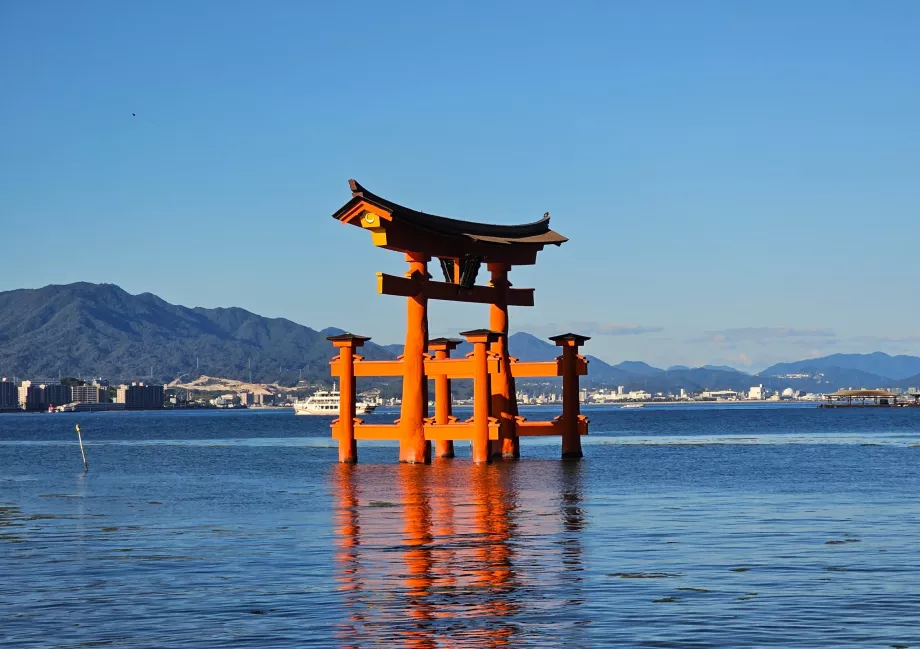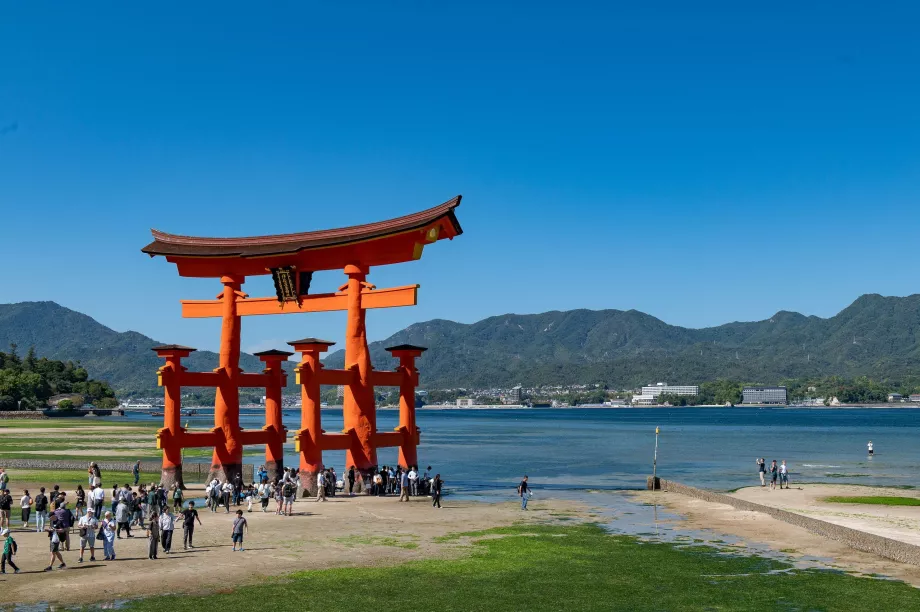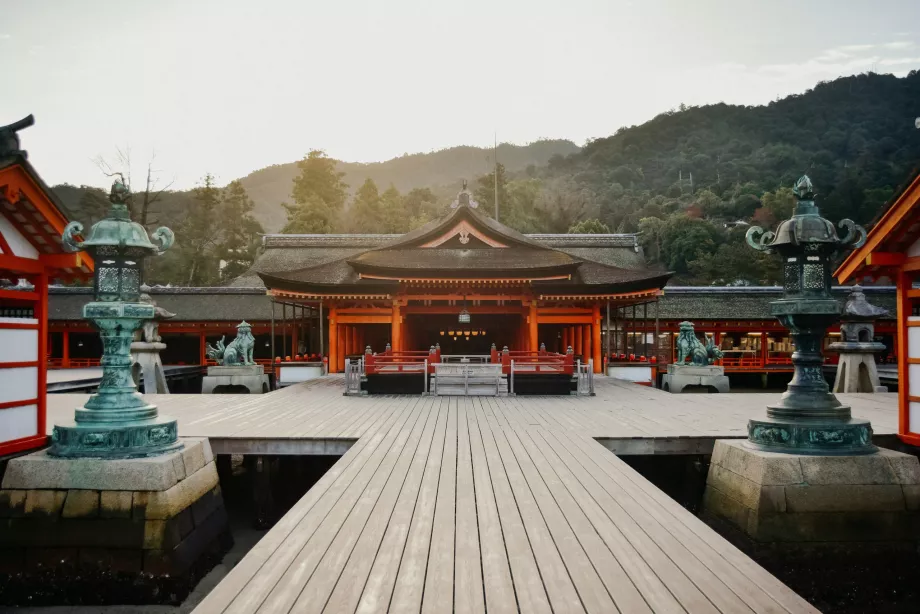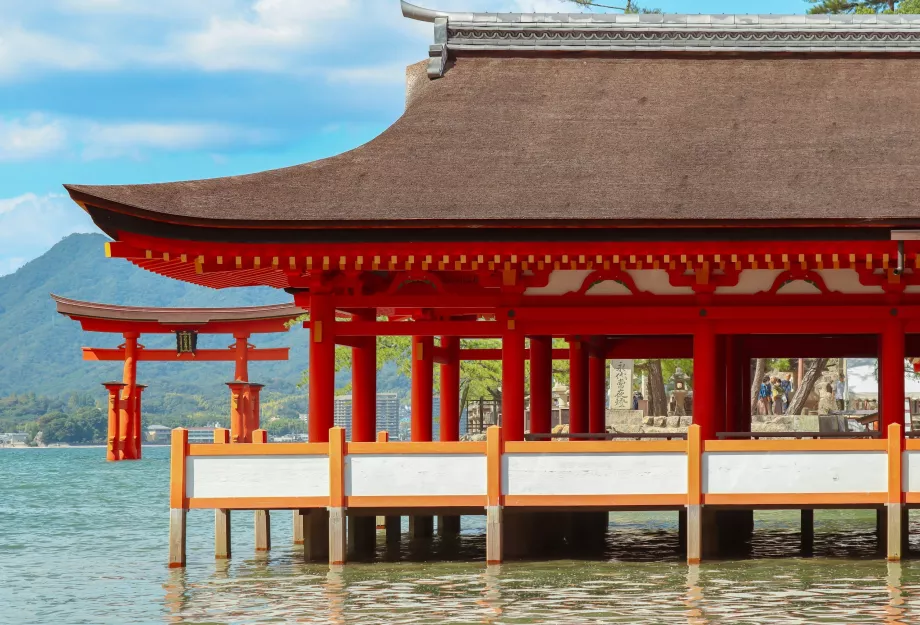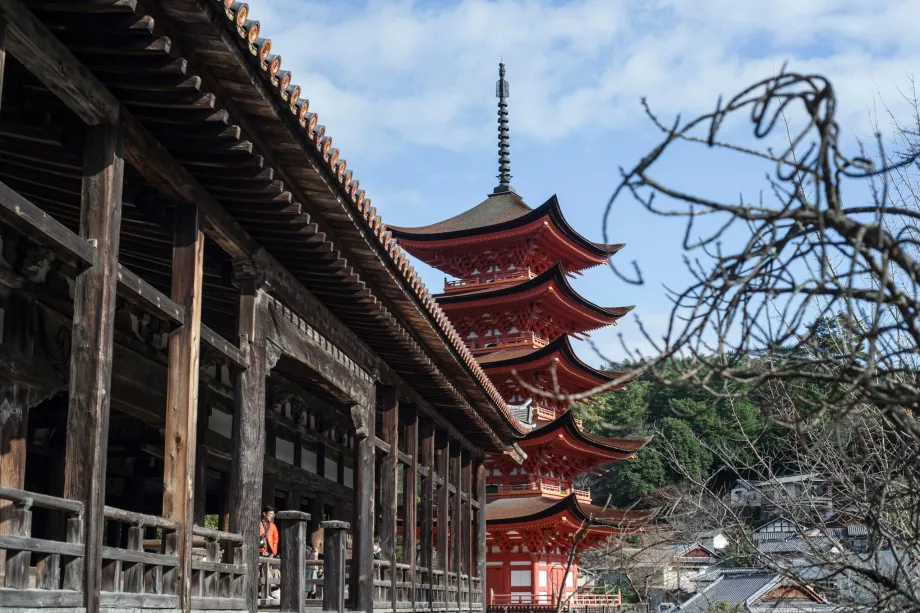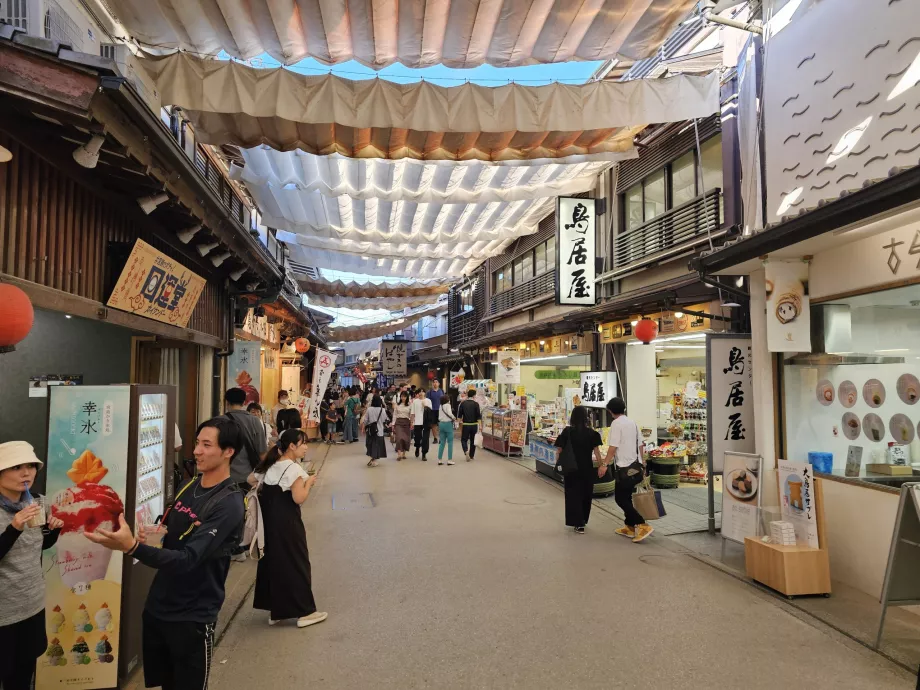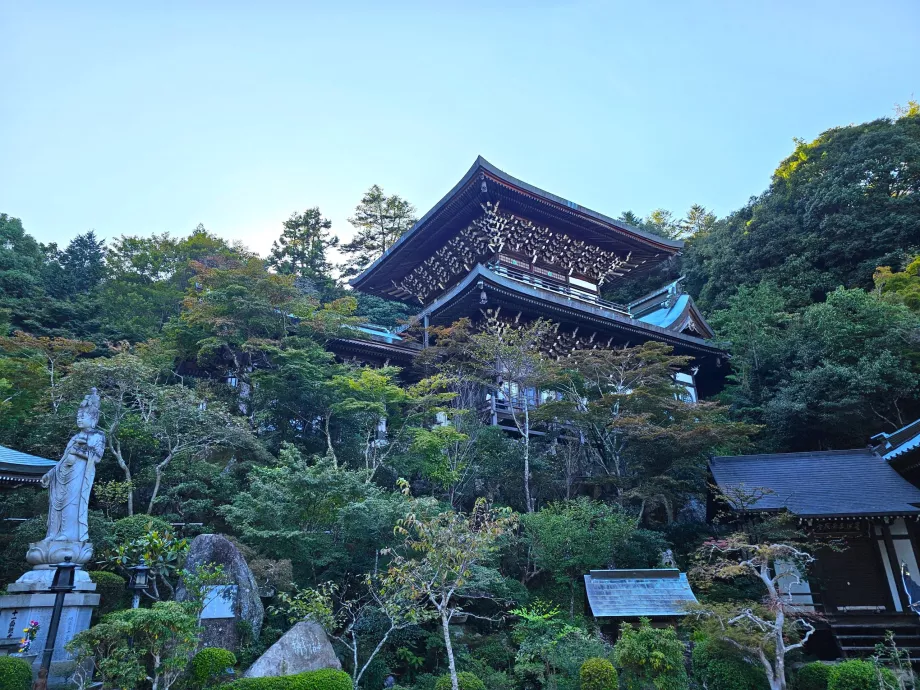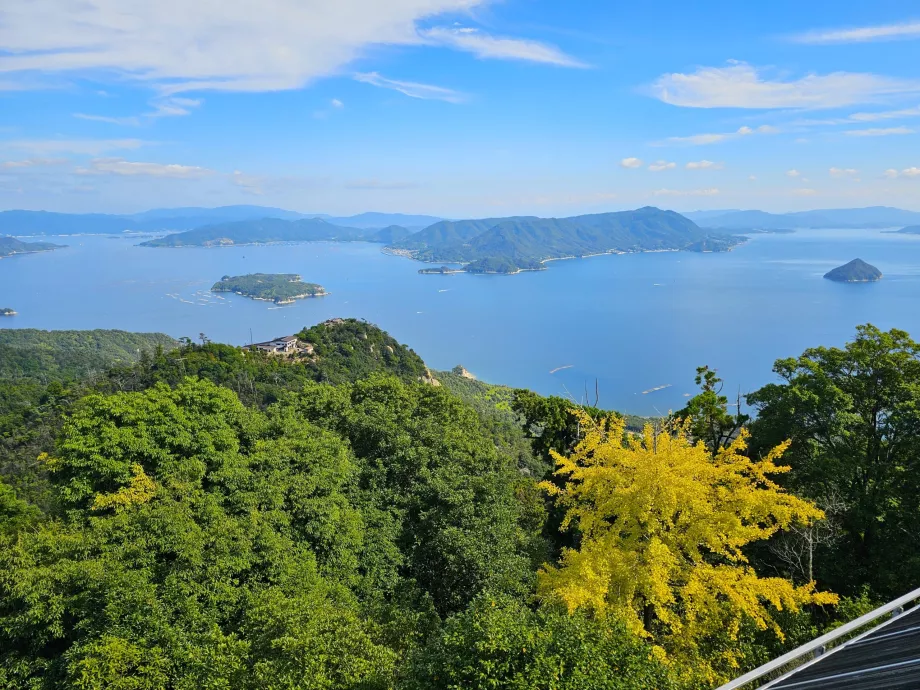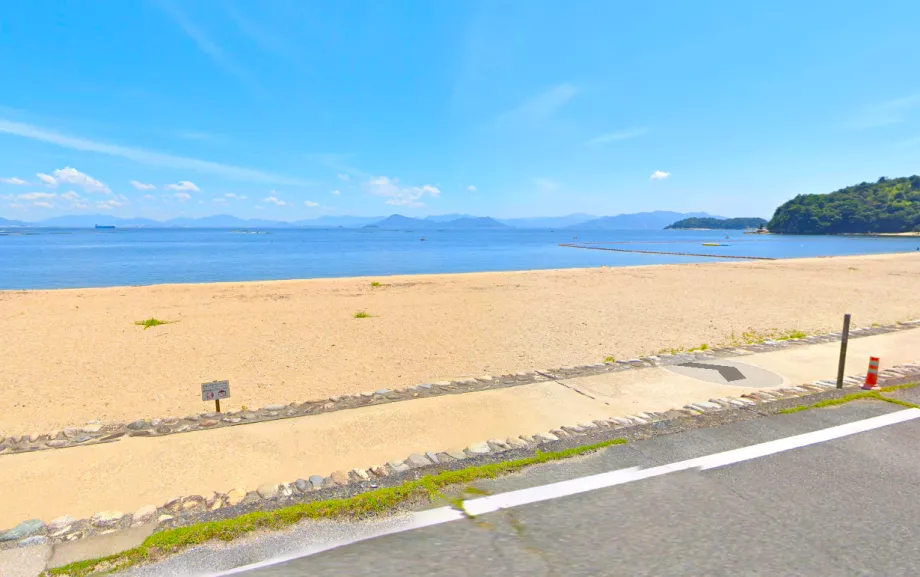Itsukushima Shrine
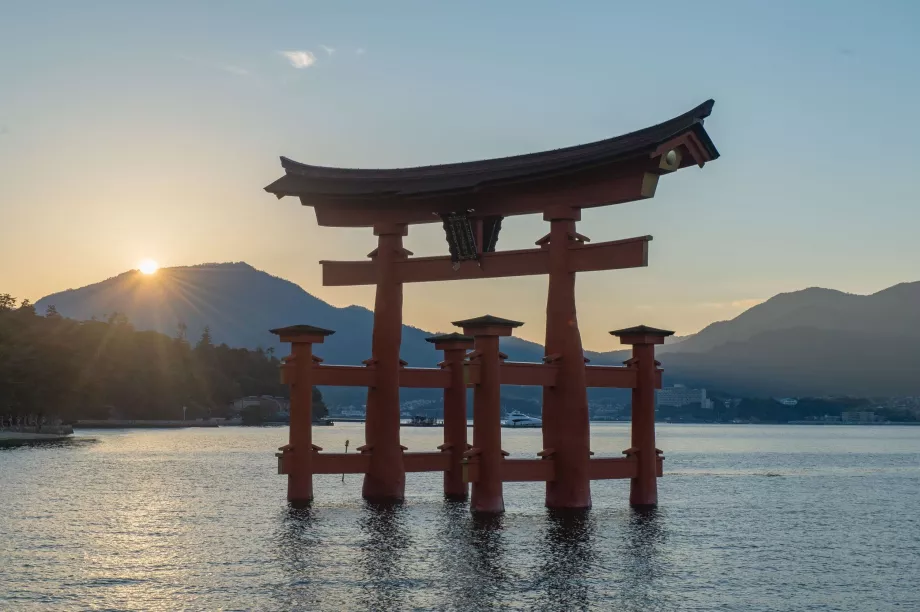
The famous red floating torii gate belonging to the adjacent Shinto temple is one of the most famous landmarks in all of Japan.
Itsukushima Temple dates back to the late 6th century and the entire temple is a UNESCO World Heritage Site.
Book a hotel on Miyajima Island
The shrine, with its iconic red torii gate, is so famous that it has given the island named Itsukushima the more widely used name "Miyajima", meaning "Island of the Shrine".
The floating torii gate in the sea
Although Itsukishima-jinja is one of the largest Shinto shrines, it gained its fame mainly because of the torii - a red gate typical of all Shinto shrines - located about 80 meters offshore in the sea.
The gate is seemingly floating only at high tide. When the tide is low, you can walk right up to the gate on paved sand.
When the tide is low, you can walk right up to the gate on the packed sand.
The current torii gate dates from 1875, however the first smaller gate stood on this site from 1168.
The gate is built of decay-resistant camphor wood.
Tide times change throughout the year and can be found, for example, via tidetime.org/asia/japan/miyajima.
Shrines on stilts
The shrine itself is also closely connected to the water, with much of it standing on stilts in the sea.
You can walk along the wooden walkways covered by the roof and peer into the main part of the shrine.
The sanctuary and its "floating" torii gate are beautifully lit until 11pm.
Admission and opening hours
The torii gate is free to walk to at low tide, as are the promenades, which offer side views of the "floating" gate.
There is an entrance fee to enter the sanctuary area directly and the best vantage point to see the flooded red torii gate from a direct view.
- 300 jpy - Ticket price for adults
- Open daily from 6:30am, closing time varies between 5pm and 6:30pm depending on the season.
For details, visit the official website: itsukushimajinja.jp/admission.
What to see around
Discover all the places to see in Miyajima.
Any questions left?
If you have any questions or comments about the article...

